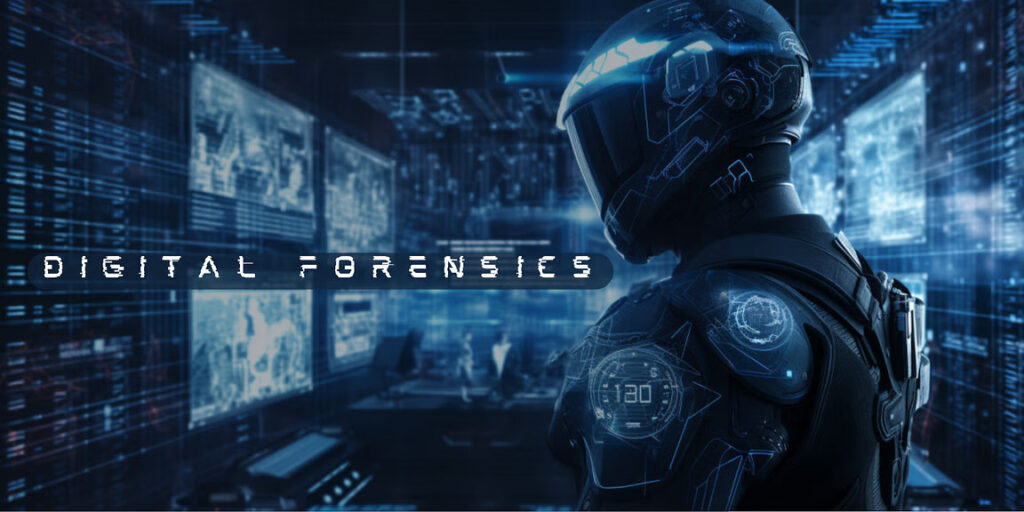Exploring the World of Digital Forensics 2023

In an era dominated by rapidly advancing technology, the need for effective cybersecurity measures has never been more critical. As individuals and organizations become increasingly reliant on digital platforms, the threat of cybercrimes continues to escalate. In response to this growing challenge, the field of digital forensics has emerged as a powerful tool for investigating and preventing cyber incidents. In this blog post, we will embark on a comprehensive journey into the world of digital forensics, shedding light on its intricacies and the pivotal role it plays in the realm of cybersecurity.
Digital forensics, also known as cyber forensic science, is the process of collecting, analyzing, and preserving electronic evidence to investigate and prevent cybercrimes. The primary objective is to uncover the truth by examining digital artifacts such as computer systems, networks, and electronic devices. This field is crucial in solving a wide range of cyber incidents, including data breaches, hacking, financial fraud, and more.
Exploring the World of Digital Forensics: Key Components
- Evidence Collection and Preservation: Digital forensics begins with the meticulous collection and preservation of electronic evidence. This involves securing and isolating the digital crime scene to prevent contamination. Experts use specialized tools to create forensic images of storage devices, ensuring the integrity of the data for analysis.
- Data Analysis: Once the evidence is collected, the next step is data analysis. This phase involves scrutinizing the digital artifacts for relevant information. Digital forensic experts employ various techniques, including file recovery, keyword searches, and timeline analysis, to reconstruct the sequence of events and uncover potential clues.
- Incident Response: Digital forensics is often an integral part of incident response, allowing organizations to identify and mitigate cyber threats promptly. By analyzing the patterns and methods used by attackers, cybersecurity professionals can enhance their defense mechanisms to prevent future incidents.
The Role of Data Science in Forensics:
As technology continues to evolve, the integration of data science in forensics has become increasingly prevalent. Data science techniques enhance the efficiency and depth of digital forensic investigations. Machine learning algorithms, statistical analysis, and artificial intelligence play a vital role in identifying patterns, anomalies, and trends within large datasets.
Exploring the Future:
The landscape of digital forensics is continually evolving, driven by advancements in technology and the ever-changing nature of cyber threats. As the world becomes more interconnected, the challenges faced by digital forensics professionals grow in complexity. The integration of cutting-edge technologies, such as blockchain analysis and advanced encryption, is essential to staying ahead of cybercriminals.
Challenges and Opportunities:
While digital forensics has proven to be a formidable weapon against cyber and Ethical Hacking threats, it is not without its challenges. The constantly evolving nature of technology poses a significant hurdle for investigators, requiring continuous learning and adaptation. Additionally, the increasing use of encryption and anonymization techniques by cybercriminals adds a layer of complexity to digital forensic processes.
However, with challenges come opportunities. The rapid growth of data science and artificial intelligence provides new avenues for digital forensics professionals to enhance their capabilities. Machine learning algorithms can assist in the automatic identification of patterns and anomalies in large datasets, streamlining the investigative process. Moreover, advancements in forensic tools and techniques empower investigators to stay ahead of cyber threats.
Legal and Ethical Considerations:
As digital forensics becomes more prevalent, the legal and ethical aspects surrounding its use gain prominence. Adhering to strict legal standards is paramount to ensure the admissibility of digital evidence in court. Moreover, maintaining the privacy and rights of individuals during investigations is a delicate balance that digital forensics professionals must navigate.
Conclusion:
In conclusion, the world of digital forensics is a dynamic and crucial aspect of modern cybersecurity. Through meticulous evidence collection, data analysis, and the incorporation of data science techniques, digital forensics professionals play a pivotal role in uncovering cybercrimes and securing digital landscapes. As we continue to explore this fascinating realm, one thing remains clear: the importance of digital forensics will only continue to grow as technology advances and cyber threats become more sophisticated. Embracing innovation, staying informed about emerging technologies, and upholding legal and ethical standards are key to navigating the ever-evolving landscape of digital forensics.






